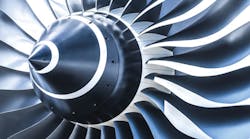The Lightweight Innovations for Tomorrow (LIFT) initiative is taking an inward turn in its latest technology R&D projects, emphasizing less how light materials can be manufactured and more how they form, and how they perform in practical applications. As important, the two projects LIFT has announced in recent weeks are focused on higher-value, more specialized materials, suggesting a general need among manufacturers to gain more flexibility to accomplish emerging product designs.
LIFT, established in 2014 as a “manufacturing innovation institute” operated by the American Lightweight Materials Manufacturing Innovation Institute, coordinates academic and institutional research with likely and/or available industrial partners, with specific development targets. It operates under the National Network for Manufacturing Innovation, a federal initiative to create regional hubs to accelerate the development and adoption of new manufacturing technologies.
In 2015, LIFT launched two industrial-academic research to optimize production techniques for lightweight ductile iron casting, and to develop vacuum-aided diecasting technologies for aerospace, defense, and automotive applications.
The two programs announced this year appear to have a narrow focus, in respect to the manufacturing operations that may benefit — but a more intensive approach to defining manufacturing practices.
In January, it started a project to identify lower-cost design and testing methods for titanium alloy parts, in order to improve the development and manufacturing cost for aircraft engines and other aerospace applications. Specifically, the researchers aim to develop computer models that will cut the time and cost of materials development, component design, and manufacturing by 50%. New “computational tools” also will be developed, according to Alan Taub, LIFT’s chief technology officer.
Taub predicted the new tools also would improve manufacturing of titanium components. “The cost of titanium itself and the time it takes to design and test new components are significant barriers. If this partnership between industry and academia can lower that barrier, it will encourage more use of this very versatile lightweight metal,” according to Lawrence E. Brown, executive director of LIFT.
“Turbine fans in aircraft engines, for example, operate in demanding conditions, but are critical to maintaining high performance," he continued.
GE Aviation and The Ohio State University’s Light Metals and Manufacturing Research Laboratory are conducting the research. Also participating will be EWI, Purdue University, Southwest Research Institute, University of Michigan, and the University of North Texas.
Joining the lead research partners are The Boeing Co. and Scientific Forming Technologies Corporation, a developer of engineering software (DEFORM) used by designers to analyze metal forming, heat treatment, machining and mechanical joining processes.
The next area of research will be aluminum-lithium alloys. LIFT’s fourth project, announced in February, will seek to predict the performance of Al-Li components in jet engines and other critical applications. The United Technologies Research Center and the University of Michigan are the lead research partners in this effort, which will undertake advanced computer simulations to predict the performance of aluminum-lithium under operational conditions. Their work also will include process modeling and simulation of the material’s evolution during industrial operations.
Other research participants are Lockheed Martin, Case Western Reserve University, The Ohio State University, and Southwest Research Institute.
Alex Staroselsky, principal research engineer at United Technologies Research Center said, “Any company interested in these alloys may benefit from what we develop, but we are really focused on improving turbine engine components for the aerospace industry.”
Aluminum-lithium alloys are not new: they have been adopted in recent years to form commercial airframe parts, including for the Airbus A380 and A350 and the Boeing 787 Dreamliner. Aerospace manufacturers have adopted the material too, to form fuel tanks spacecraft and rockets for defense systems.
Lithium, it is widely noted, is the least dense elemental metal, and when it is alloyed with aluminum it creates a material that has a lower structural mass, but also stronger and more strain-resistant than more standard aluminum alloys, though achieving the latter quality requires careful aging.
According to John Allison, LIFT technical leader for Integrated Computational Materials Engineering, “Earlier aluminum-lithium alloys sometimes had issues with cracking or performing in high-temperature environments. The latest generation of these alloys show great improvements in several areas, but we really need more integrated computer models to predict their performance at a number of steps, from their atomic structure right up to a finished component.”
He continued: “Aluminum-lithium alloys often have a microstructure analogous to the grain in wood. It behaves differently when you bend it in one direction rather than another. The unique interdisciplinary team expects to develop what’s called crystal plasticity modeling to predict the final microstructure in an alloy. That, in turn, defines the mechanical properties of the alloy as it’s formed into a part.”
LIFT CTO Alan Taub said the two-year program would identify “the right computational tools” that will make it possible to design lighter jet engine components, “both faster and better.”









